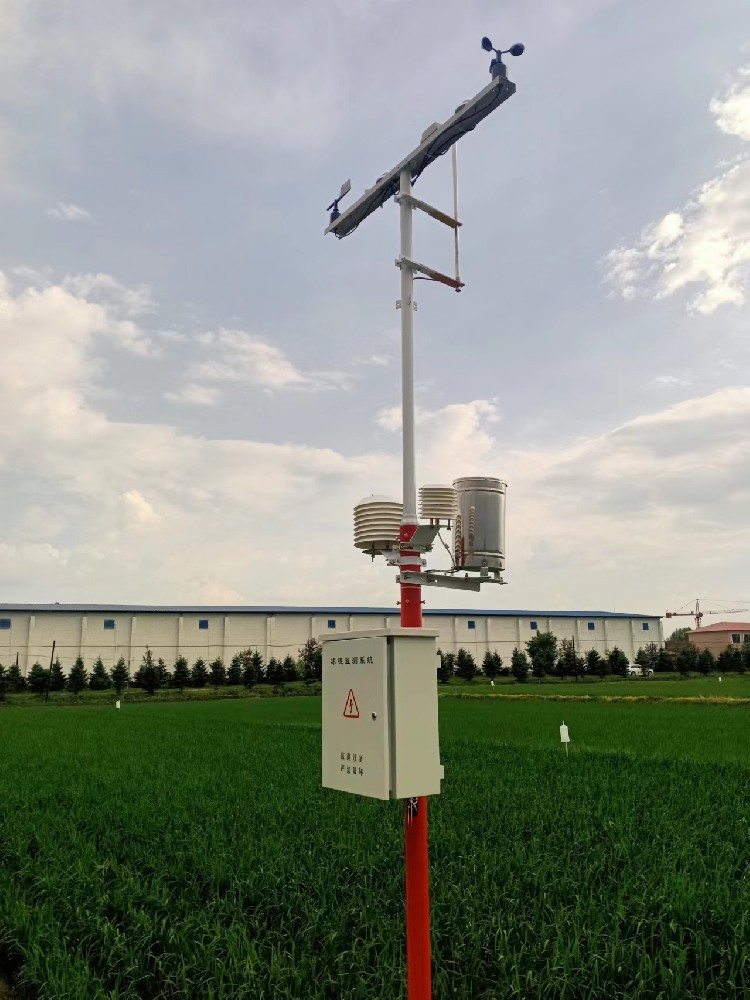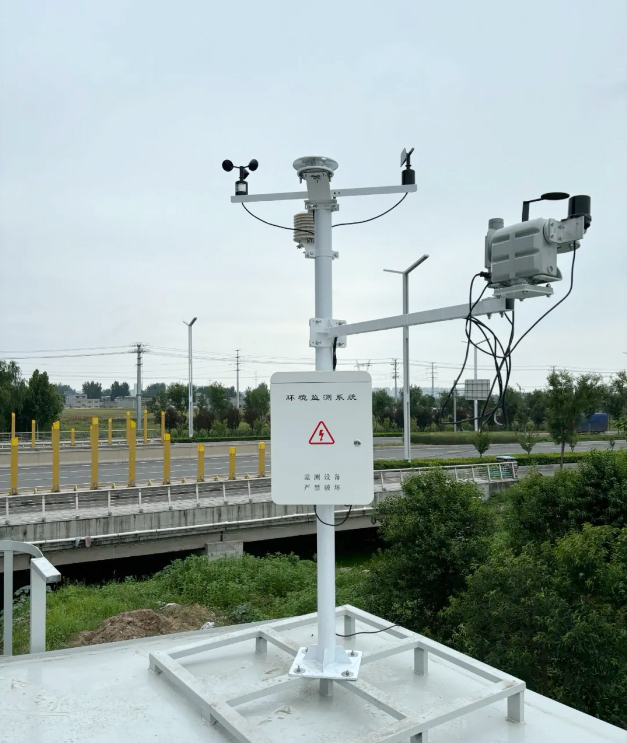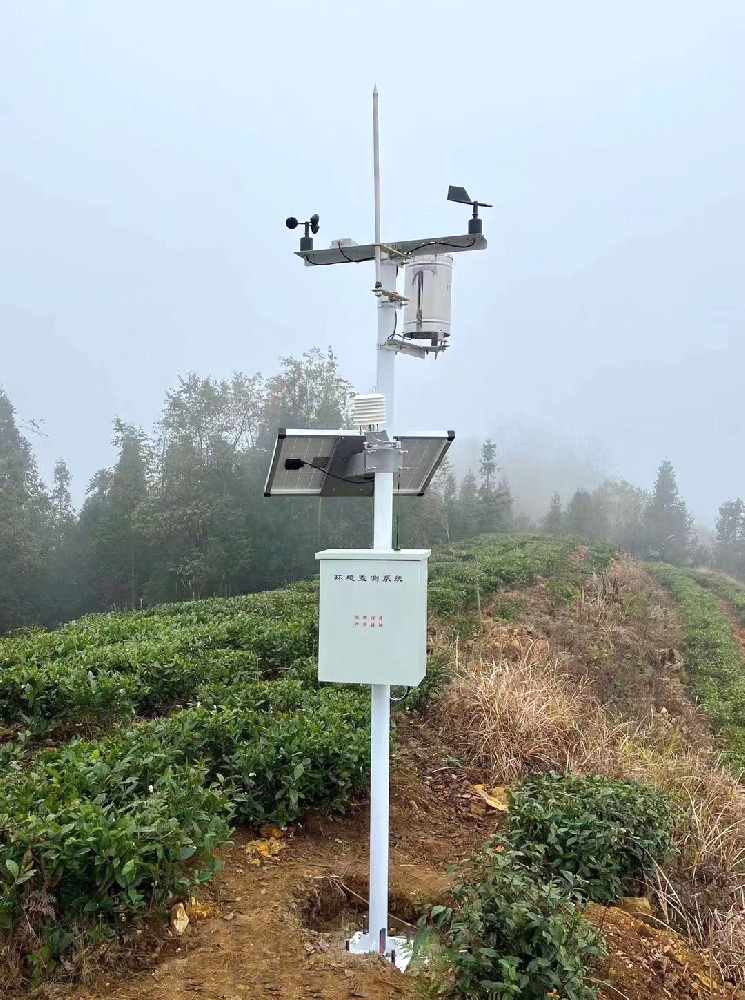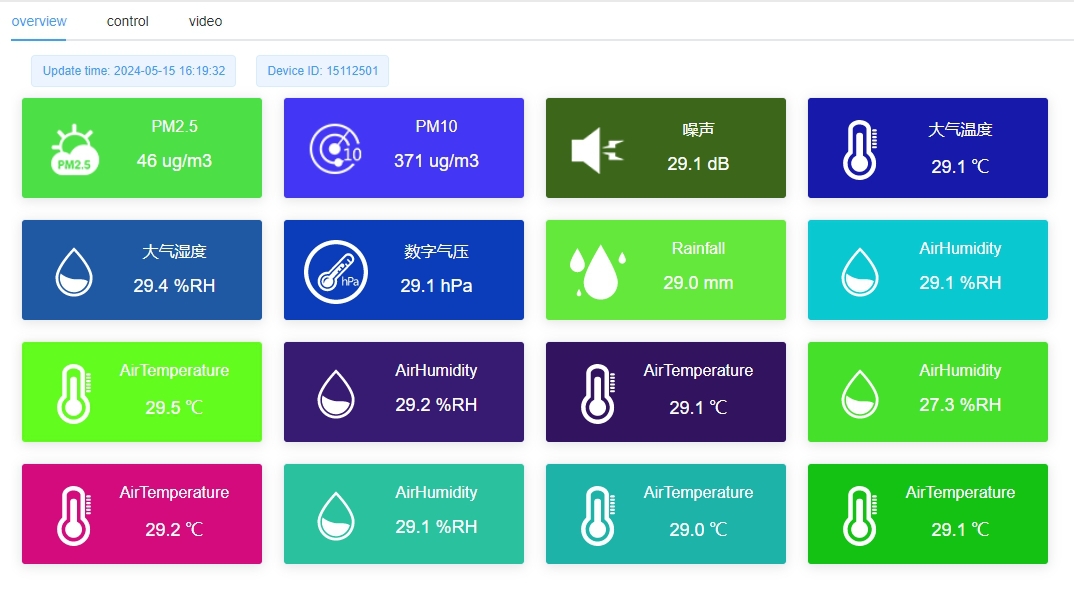

— Products —
 Consumer hotline +8618073152920
Consumer hotline +8618073152920 WhatsApp:+8615367865107
Address:Room 102, District D, Houhu Industrial Park, Yuelu District, Changsha City, Hunan Province, China
All products
Remote weather station is an automated weather monitoring system integrating high-tech sensors and communication technologies, which can independently or networked collect various meteorological data in the atmosphere and transmit these data to a remote data processing center or monitoring platform by wireless or wired means. Such a system is vital for weather forecasting, environmental research, agricultural management, aviation safety, urban planning and many other fields.
Tel/WhatsApp:+8615367865107
Email:Arvin@niubol.com +Nearly 100 partner company in more than 68 countries. We are committed to providing high-quality, practical products to meet your needs and help you solve problems.Product Details
Remote weather station is a kind of equipment system that can automatically collect, process and transmit meteorological data, usually deployed in locations far away from meteorological centers or data centers, used for real-time monitoring and recording of various meteorological elements, and transmit data to remote data centers or user terminals by using wired or wireless data transmission devices (e.g. GPRS, 3G/4G, WiFi, LoRa, etc.).
The remote weather station is capable of testing a wide range of weather parameters, including but not limited to:
Air temperature sensor: measured by using temperature sensor with high accuracy, which is important for weather forecasting and agricultural production.
Air humidity sensor: measured by humidity sensor, which plays a key role in meteorological disaster warning and agricultural production.
Wind Speed and Direction Sensor: Measured in real time by wind speed sensor and wind direction sensor, it provides data support for weather forecasting, navigation, aviation and outdoor activity safety.
Rainfall Sensor: Measured by rainfall sensor, it is important for water resource management and flood and drought control.
Barometric Pressure Sensor: Measurement of atmospheric pressure using barometric pressure sensors is valuable for weather forecasting and meteorological research.
Snow Depth Sensor: Measurement of snow depth in snowy areas has a significant impact on transportation and agriculture.
Solar Radiation Sensors: Assess solar energy resources and environmental heat balance.
Visibility sensors: critical for transportation, aviation and maritime navigation safety.
In addition, some advanced remote weather stations can also measure CO2 sensors, soil temperature sensors, soil moisture sensors, PM2.5 sensors, noise sensors, ultraviolet light and other parameters.
 |  |  |  |  |
| Anemometer Wind Speed sensor | Wind direction sensor | Tipping bucket rain gauge sensor | Tipping bucket rain gauge sensor | Piezoelectric Rain Gauge |
 |  |  |  |  |
| Atmospheric Temperature Humidity air pressure Sensor | ultrasonic wind speed and direction sensor | 5 in1 Ultrasonic Weather Station Sensor | All-in-One Weather Station | 7 in1 Ultrasonic Weather Station Sensor |
 |  |  |  |  |
| Solar Radiation Sensor | Solar Radiation Sensor | Photosynthetically Active Radiation Sensor; | illumination sensor | Ultrasonic Snow Depth Sensor |
 |  |  |  |  |
| Noise measurement sensor | CO2 sensor | PM2.5 and PM10 sensors | Visibility sensors | Soil Moisture Temperature sensor |
Remote weather station receives and processes data from weather sensors through data collectors, and then transmits the data to remote data centers or user terminals by using wired or wireless data transmission devices (e.g., GPRS, 3G/4G, WiFi, LoRa, etc.). These technologies allow the data to be transmitted efficiently over long distances without the need for a physical connection, ensuring that the data are sent to the data center in real time and continuously. Wired transmission is stable and fast, but requires the laying of lines at the time of construction, which is costly; wireless transmission, on the other hand, has the advantages of easy installation and flexibility, and is gradually becoming the mainstream trend.

High degree of automation: able to automatically collect, process and transmit data, reducing manual intervention.
Real-time monitoring: real-time monitoring of various meteorological elements, providing timely and accurate weather information.
Wide coverage: through wireless transmission technology, it can cover a wide area without geographical restrictions.
Low power consumption: some remote weather stations adopt low power consumption design, which can run for a long time.
Low maintenance cost: automated operation reduces manual intervention and lowers long-term operation cost.
High efficiency: Automatic data processing and transmission improves the efficiency of data analysis.
High data accuracy: automatic data collection reduces human error.
Higher equipment cost: advanced remote weather stations contain multiple sensors and complex data processing systems, which are more costly.
Maintenance difficulties: remote weather stations deployed in remote areas may be difficult to maintain in a timely manner.
Dependence on communication networks: Data transmission may be hindered in areas with poor communication signals.
Higher initial investment cost: A certain amount of capital investment is required for equipment purchase and installation.
Dependence on communication networks: In areas not covered by communication networks, additional communication equipment may be required.
Power supply problems: remote areas may need to consider independent power solutions such as solar panels.
Remote weather station is widely used in data collection and scientific research in many fields, such as weather station construction, agricultural and forestry climate monitoring, ecological environment monitoring, highway and railroad operation and geological disaster monitoring, teaching unit disease and insect research and disease and insect reporting. Specific application scenarios include:
Agricultural field: monitoring environmental conditions to provide a suitable growing environment for crops.
Forestry field: monitoring forest meteorological conditions to help make decisions on fire prevention.
Urban planning: providing urban climate data for planning urban infrastructure and environment.
Meteorological research: Provide comprehensive and accurate data support for meteorological research.
Aviation and Navigation: Ensure safety and optimize routes.
Weather Forecasting: Provide real-time weather data for meteorological departments to improve forecasting accuracy.
Environmental monitoring: monitoring air quality, water quality and other environmental parameters.
Traffic management: monitoring road meteorological conditions to ensure traffic safety.
Water resource management: monitoring hydrometeorological data, optimizing water resource utilization.

- Provide decision-making support: Provide scientific meteorological data support for government, enterprises and society.
- Early Warning of Disasters: Timely detection and early warning of meteorological disasters to reduce losses.
- Promote the rational use of resources: guide the rational allocation of resources in agriculture, transportation and other fields through meteorological data.
Ensuring the data security of remote weather station is the key to guarantee the accuracy and reliability of weather information. The following are some measures to ensure the data security of remote weather station:
- Use strong encryption algorithms (e.g. AES-256) to encrypt the transmitted data to ensure that the data will not be intercepted and deciphered during transmission.
- Encrypt the data stored on the server or device to prevent data leakage.
- Use secure communication protocols (e.g., HTTPS, SSL/TLS) to establish a data transmission channel. These protocols can provide encryption and integrity verification of data transmission.

- Implement user authentication mechanisms to ensure that only authorized users can access data and systems.
- Use Access Control Lists (ACLs) or Role Based Access Control (RBAC) to restrict access to different users and devices.
- Back up data regularly to prevent data loss or corruption.
- Use a multi-geographic backup strategy to prevent natural disasters from affecting the data.
- Deploy an intrusion detection system to monitor abnormal network traffic and behavior to detect potential security threats in a timely manner.
- Use intrusion prevention systems to proactively block known attack patterns.
- Regularly update the software and firmware of remote weather stations to patch security vulnerabilities.
- Ensure that all devices are running the latest versions of operating systems and applications.
- Protect weather station equipment from physical damage, for example by installing guards, locks, and surveillance cameras.
- Install equipment in hard-to-reach locations to minimize the risk of vandalism.
- Develop and implement a network security strategy, including network isolation, firewall settings, port scanning, and malware protection.
- Limit unnecessary network services and ports to reduce the potential attack surface.
- Implement real-time monitoring and record all system activity logs.
- Regularly check logs for timely detection and response to security events.
- Develop a disaster recovery plan so that services can be quickly restored in the event of data loss or system failure.
Through the above measures, the security of remote weather station data can be greatly improved to ensure the integrity, reliability and confidentiality of weather data.
Summary:
Remote weather station is an automated weather monitoring system integrating high-tech sensors and communication technologies, which can independently or networked collect various meteorological data in the atmosphere and transmit these data to a remote data processing center or monitoring platform by wireless or wired means. Such a system is vital for weather forecasting, environmental research, agricultural management, aviation safety, urban planning and many other fields. It is able to monitor a variety of weather elements in real time, provide timely and accurate weather information, and provide strong support for agriculture, forestry, urban planning, meteorological research and other fields.

However, the shortcomings such as high cost of equipment, difficult maintenance and data transmission affected by weather also need to be considered and solved in practical application. With the continuous development of science and technology, the remote weather station will continue to develop in the direction of more intelligent, accurate and environmentally friendly, providing more accurate weather services for our life.
Sensors & Weather Stations Catalog
Agriculture Sensors and Weather Stations Catalog-NiuBoL.pdf
Weather Stations Catalog-NiuBoL.pdf
Related recommendations
 Multi-Depth Soil Sensor RS485
Multi-Depth Soil Sensor RS485 TDR Soil Moisture Sensor
TDR Soil Moisture Sensor Pyranometer Solar Radiation Sensors
Pyranometer Solar Radiation Sensors Soil ph sensor
Soil ph sensor Tipping Bucket Rain Gauge
Tipping Bucket Rain Gauge Air Temperature and Humidity Sensor
Air Temperature and Humidity Sensor
Screenshot, WhatsApp to identify the QR code
WhatsApp number:+8615367865107
(Click on WhatsApp to copy and add friends)